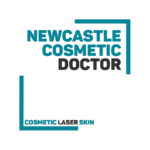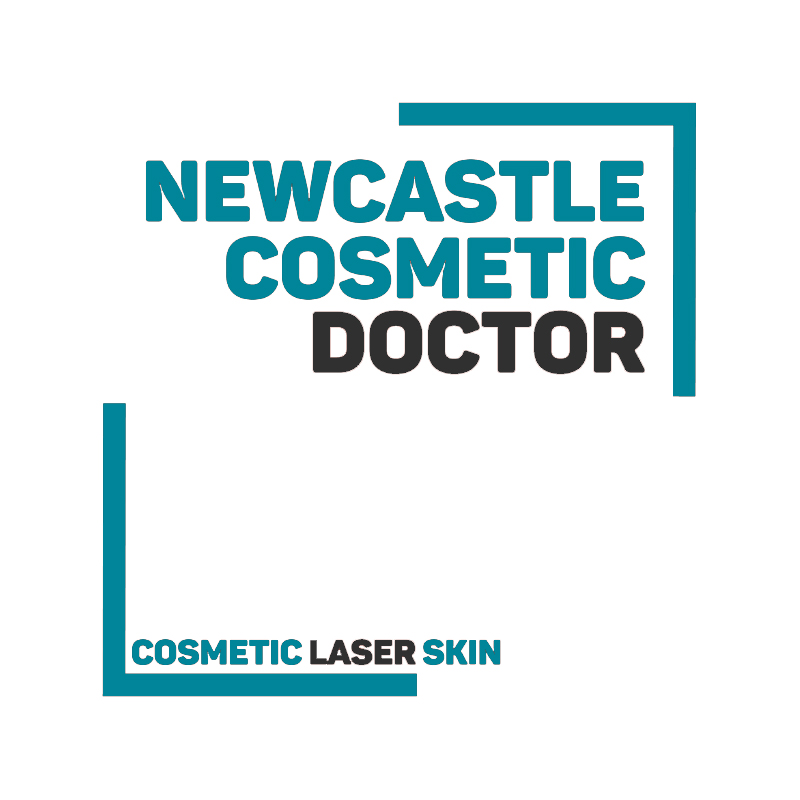1. Purpose
To ensure safe, evidence-based, ethically compliant administration of hyaluronic acid dermal fillers at Newcastle Cosmetic Doctor, aligned with Australian regulatory and professional standards. 1 2 3 4 5
2. Scope
Applies to all practitioners performing dermal filler injections and support staff involved in patient education, consent, documentation, product handling, follow-up, and adverse event management. 1 3 5 6
3. Pre-Care (Patient Preparation)
- Medical history & risk screening: Document allergies (including lidocaine, BDDE), anaphylaxis, autoimmune disease, prior filler, history of herpes simplex; pregnancy/breastfeeding are contraindications; assess psychological readiness and expectations. 1 5 7 8
- Medication & supplement review: Record anticoagulants/antiplatelets, isotretinoin, immunosuppressants; consider temporary modification in consultation with the patient’s GP/specialist to reduce bruising risk. 5 7
- Prophylaxis (HSV): For patients with recurrent orolabial herpes undergoing perioral injections, consider antiviral prophylaxis. 9
- Photography & consent: Obtain standardised baseline photographs (frontal/obliques/profile) with written informed consent; store securely under the Privacy Act 1988 (Cth). 1 4 10 11
- Patient education: Discuss realistic outcomes, product brand, expected longevity, reversibility with hyaluronidase, risks (bruising, swelling, nodules, vascular occlusion, rare blindness), and emergency access pathway. 1 2 7 15
- Pre-procedure behaviour: Avoid alcohol, high-dose vitamin E, fish oil, ginkgo for ~3–5 days pre-treatment to reduce bruising risk. 7 15
4. Procedure Day
- Identity & consent confirmation: Reconfirm identity, medical updates, and signed consent; ensure cooling-off as appropriate. 1
- Aseptic preparation: Cleanse with chlorhexidine or isopropyl alcohol; use sterile gloves and maintain a clean field. 3
- Product verification: Use only TGA-registered HA fillers; verify brand, batch/lot, expiry; attach sticker/label to the clinical record; confirm ARTG listing if needed. 2 12
- Major HA brands used in Australia: Restylane (Galderma), Juvéderm (Allergan/AbbVie), Belotero (Merz), Teosyal (Teoxane), Saypha/Princess (Croma Pharma), Revanesse (Prollenium). 13 14 15 16 17 18
- Hyaluronidase readiness: Keep TGA-registered hyaluronidase available (e.g., 1,500 U vials) with posted reconstitution/dosing protocol for vascular events. 2 7 19
- Injection technique: Use blunt cannula (25–27G) or fine needle (30G) per anatomy; aspirate where appropriate; inject small boluses (≤0.1 mL) or retrograde threads; monitor for blanching, livedo, disproportionate pain. 6 7
- Documentation: Record brand, batch/expiry, syringe serial, volume per site, technique (needle/cannula, depth, plane), anaesthesia used, and immediate tolerance; add injection mapping and photographs. 1 5 20
- Emergency kit: Hyaluronidase, aspirin (if appropriate), topical nitroglycerin, warm compress, sterile saline, adrenaline autoinjector, oxygen, eye shield; escalation pathway posted. 2 7 8 20
5. Product Handling
- Storage & transport: Store sealed syringes between 2–25 °C per PI; avoid freezing/overheating; maintain transport cold-chain logs. 2 3 11
- Integrity & sterility: Check tamper-evident seal; discard if damaged or expired. 2 18
- Traceability: Maintain batch/lot/expiry register linked to patient records; keep stickers/labels. 1 5 18
6. Post-Treatment Patient Instructions (Aftercare)
- First 12–24 hours: Avoid touching/makeup for 12 h; avoid strenuous exercise, alcohol, heat for 24 h; cold compress intermittently. 7 15
- Two weeks: Avoid facials, massage, dental work, or energy-based devices for 2 weeks. 7
- Analgesia: Prefer paracetamol; avoid aspirin/NSAIDs if bruising risk. 7 15
- Expected reactions: Mild swelling/bruising 1–3 days; small irregularities soften naturally. 7 15
- Red flags: Contact clinic for severe pain, blanching, livedo, vision changes, spreading swelling/fever. 7 8 15
- Travel: Avoid air travel for 24 h if swelling/discomfort persists. 15
7. Follow-Up and Reviews
- 10–14 day review: Assess symmetry, nodules, early oedema; conservative touch-up if indicated. 5 7
- 4-week review: Final photos; evaluate satisfaction/durability. 5
- Annual audit: Aggregate complication rates, product volumes, corrective actions. 1 5
8. Adverse Reactions & Complications
- Immediate/common: Pain, erythema, swelling, bruising; self-limiting. 7 15
- Early: Infection, asymmetry, nodules, Tyndall effect. 7
- Delayed: Granuloma, biofilm, delayed hypersensitivity, migration. 7
- Vascular occlusion / vision risk: Severe pain, blanching, livedo, cool skin, visual disturbance → high-dose hyaluronidase, massage, nitroglycerin, aspirin, urgent ophthalmology. 7 8 17
- Anaphylaxis: Follow emergency protocol; document and report. 3 8
- Regulatory reporting: Serious adverse events → TGA DAEN + clinic register. 8
9. Contraindications & Precautions
- Absolute: Pregnancy or breastfeeding; active infection or dermatitis at injection site; known severe allergy to components (e.g., lidocaine, BDDE); uncontrolled autoimmune disease; active herpes in the area. 1 2 7 15
- Relative/caution: Anticoagulation or bleeding diathesis; immunosuppression; history of keloid/hypertrophic scarring; prior filler in the same plane (migration/inflammation risk); unrealistic expectations or body dysmorphic disorder. 1 5 7 15
10. Communication & Informed Consent
- Plain-language consent: Explain brand/product, reversibility (hyaluronidase), expected duration (6–18 months depending on product and site), possible need for staged treatments, and all major risks. 1 2 15
- Records: Include product label/sticker, batch/lot/expiry, injection map, photos, aftercare sheet provided, and emergency contact details shared. 1 5 20
- Advertising compliance: Ensure before/after photos and claims comply with AHPRA advertising rules. 20
11. Documentation, Governance & Audit
- Traceability & registers: Maintain filler register linking ARTG/product, batch/lot/expiry to patient records; retain stickers. 1 18
- Cold-chain & storage: Keep temperature logs; have corrective actions for excursions; verify device calibration. 2 3
- Incident management: Internal review of complications; external reporting to TGA as indicated; maintain escalation pathways. 8 17
- Training & readiness: Maintain credentialing, CPD, BLS/ALS currency; run mock drills for vascular occlusion and anaphylaxis. 1 17
Sources
- AHPRA / Medical Board of Australia (2022), Guidelines for non-surgical cosmetic procedures, viewed 8 October 2025, https://www.ahpra.gov.au/Resources/Cosmetic-surgery-hub/Cosmetic-procedure-guidelines.aspx ↩︎
- TGA (2024), Cosmetic injections checklist, viewed 8 October 2025, https://www.tga.gov.au/sites/default/files/cosmetic-injections-checklist.pdf ↩︎
- NHMRC (2023), Australian Guidelines for Prevention & Control of Infection in Healthcare, viewed 8 October 2025, https://www.nhmrc.gov.au/about-us/publications/australian-guidelines-prevention-and-control-infection-healthcare ↩︎
- HCCC NSW (2024), Code of Conduct for Health Practitioners, viewed 8 October 2025, https://www.hccc.nsw.gov.au/ ↩︎
- RACGP (2024), Clinical resources & guidelines, viewed 8 October 2025, https://www.racgp.org.au/clinical-resources/clinical-guidelines ↩︎
- ACAM (2024), Clinical guidance for aesthetic practice, viewed 8 October 2025, https://acam.org.au/clinical-guidelines ↩︎
- Australian Prescriber (2024), Dermal fillers: complications and management, viewed 8 October 2025, https://australianprescriber.tg.org.au/articles/dermal-fillers-complications-and-management.html ↩︎
- TGA (2025), DAEN – Adverse Event Reporting Portal, viewed 8 October 2025, https://www.tga.gov.au/reporting-issues ↩︎
- Galderma Australia (2025), Restylane (AU info hub), viewed 8 October 2025, https://www.galdermaaesthetics.com/au ↩︎
- Allergan Aesthetics / AbbVie (2025), Juvéderm (AU portal), viewed 8 October 2025, https://www.juvederm.com.au/ ↩︎
- Merz Aesthetics (2025), Belotero (AU portal), viewed 8 October 2025, https://www.merzaesthetics.com.au/ ↩︎
- Teoxane / Teosyal (2025), Australia/NZ Distributor Info, viewed 8 October 2025, https://www.teoxane.com/en-aunz ↩︎
- Croma Pharma (2025), Saypha/Princess Australia, viewed 8 October 2025, https://www.cromapharma.com/en/markets/australia ↩︎
- Prollenium (2025), Revanesse – AU/NZ Regional Info, viewed 8 October 2025, https://prollenium.com/pages/international ↩︎
- Healthdirect (2025), Dermal fillers consumer info, viewed 8 October 2025, https://www.healthdirect.gov.au/dermal-fillers ↩︎
- RACGP (2014), Herpes simplex management (prophylaxis), viewed 8 October 2025, https://www.racgp.org.au/afp/2014/november/genital-herpes ↩︎
- ACSQHC (2025), Invasive procedure safety, viewed 8 October 2025, https://www.safetyandquality.gov.au/standards/nsqhs-standards/communicating-safety-standard ↩︎
- TGA (2025), Medical device regulations & ARTG search, viewed 8 October 2025, https://www.tga.gov.au/resources/artg ↩︎
- OAIC (2025), Privacy Act 1988 (Cth) – Overview, viewed 8 October 2025, https://www.oaic.gov.au/privacy/the-privacy-act ↩︎
- AHPRA (2025), Advertising guidelines, viewed 8 October 2025, https://www.ahpra.gov.au/Resources/Advertising-resources/Legislation-guidelines/Advertising-guidelines.aspx ↩︎


